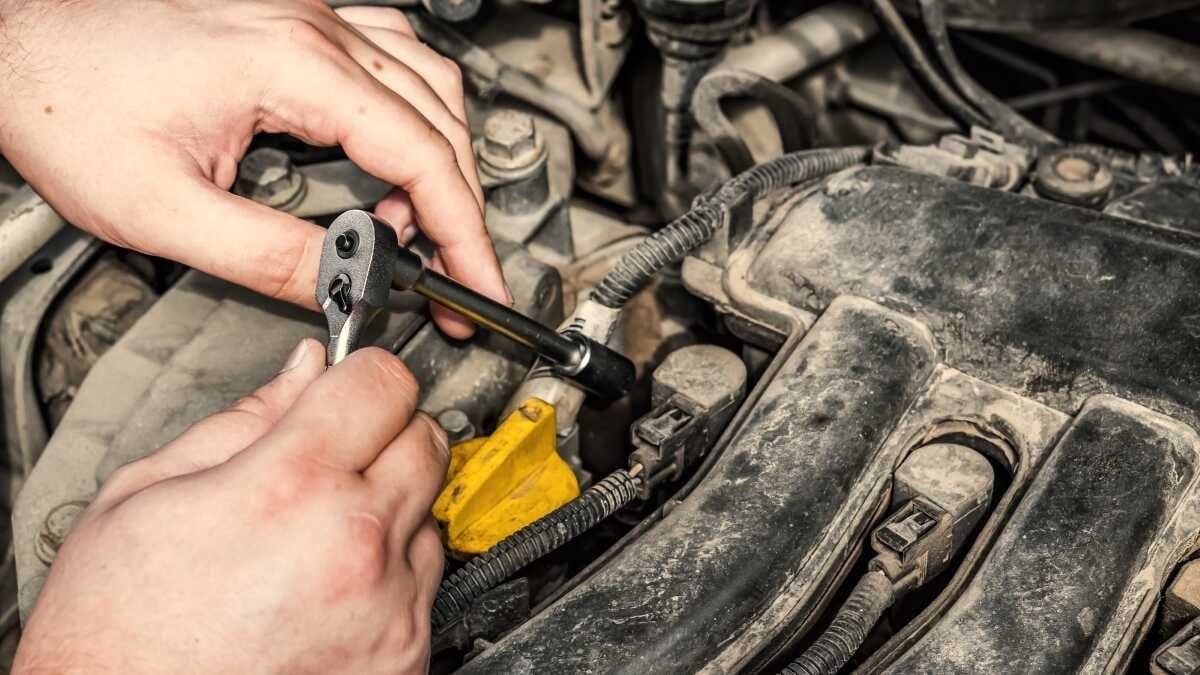DIY on your vehicle is still alive and kicking as the old saw goes. Sure, the engine bay looks more complicated today than it did when you were a kid and watched your old man work on the family Ford, but in actual practice it’s really not all that hard to do…with proper instruction.
Ford Expedition Spark Plug Change
At first glance changing the spark plugs on your Ford Expedition can appear a little on the dauting side as there are some intake manifold related components in the way that makes access look more difficult than it really is. And while following the step-by-step instructions in a repair manual is a good starting point toward learning how to do your own repairs, there’s nothing like watching someone doing it to learn all of those little details that might not be in the manual.
Related article: Ford Triton 3-Valve Engine Spark Plug Problem You Won’t Believe
That was the lesson in a recent Rainman Ray’s Repairs YouTube channel episode as he demonstrates how he disassembles the necessary components to get to the plug coils and spark plugs for a spark plug change in a 2014 Ford Expedition with the 5.4-liter 3 valve Triton engine with just over 90,000 miles on it.
The Value of This Video
The value of this video is that it shows:
- What you can expect.
- The tools you will need.
- How to gain access to the spark plugs.
- How to determine whether or not your model may have some problematic coils.
- Special Note: The question the host had with his friend concerning coil boot color of brown versus black―Apparently the black boot coils are known for running the risk of breaking off the spark plug insulator during removal whereas the brown boot coils not so much. Checking some online forums there appears to be confusion between the quality of the two boot types. However, these are not interchangeable since the brown coil boots fit the longer spark plugs (as the host showed in the video) correctly and the black coil boots do not fit the longer spark plugs correctly, which will result in engine misfire problems. In short, regardless of which coil boot color is OEM, stick with that coil boot color. Aftermarket coil boots (should you choose to go this route) may be grey in color and you will need to determine if it is the correct size for your spark plugs used.
- Correctly change the spark plugs including determining the recommended torque values and spark gap.
- The importance of applying dielectric grease.
- And putting it all back together correctly with important advice about avoiding accidentally damaging the valve cover.
Phone a Friend (Snapping Spark Plugs) @BeardedFordTech Expedition 5.4
Ignition Coil Check During Spark Plug Change
If you are DIYing your Expedition’s spark plugs, there is no better time to take a moment for a close inspection of your ignition coils. Like spark plugs, ignition coils do wear out and sometimes require replacement at the same time.
Common Causes of Ignition Coil Failure
Some common causes of ignition coil failure include:
- Faulty Spark Plugs or Spark Plug Wires: When spark plugs or their wires are worn, they can put additional electrical strain on ignition coils, leading to eventual failure.
- Non-OEM Coils: Cheaper, lower-quality coils installed by an owner or mechanic are often a cause of misfires and rough engine running because their build is inferior and cannot handle the stress of regular use.
- Normal Wear and Tear: Constant exposure to high voltage can wear out the coil's insulation and windings, leading to a breakdown. Heat, engine vibration, and rough handling by a mechanic, all can weaken ignition coils.
- Electrical Overstress: Voltage surges in your electrical system due to faulty wiring or incompatible accessories can lead to electrical overloads that will damage the ignition coil.
- Moisture and Corrosion: Water seeping into the coil causing short circuits and/or corrosion between terminals and their connections will impede the flow of electric current and can push the coil to operate hotter than it should.
For more information about the health of your ignition coil, here is an informative video from the Honest Mechanic Colorado YouTube channel that explains what you need to know simply and completely about ignition coils to expand your spark plug and other car repair maintenance and repair skills.
The Value of the 2nd Video About Coils
The value of the 2nd video (which you are encouraged to watch to supplement how to change your spark plugs) is that it explains why and how coils fail and whether you may want to add a coil change to your spark plug change.
Why Do Ignition Coils Fail: 7 Common Reasons Why They Go Bad
For additional related articles, here are a few for your consideration:
- Spark Plug Car Maintenance Mistakes Many Car Owners and Service Centers Make
- Common Car Maintenance Mistake Owners Make When Diagnosing Their Car’s Engine Problems
- Ford F-150 EcoBoost Spark Plug Replacement Demo
Timothy Boyer is an automotive reporter based in Cincinnati. Experienced with early car restorations, he regularly restores older vehicles with engine modifications for improved performance. Follow Tim on “Zen and the Art of DIY Car Repair” website, the Zen Mechanic blog and on Twitter at @TimBoyerWrites and Facebook for daily news and topics related to new and used cars and trucks.
COMING UP NEXT: Engine Oil Leak Tip If Your Engine Leaks Oil After an Oil Change
Image source: Deposit Photos





